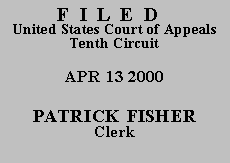

| UNITED STATES OF AMERICA, |
|
The district court must make particularized findings which are supported in the record about the scope of Mr. Browne's agreement to be a part of the MSMC drug operations and about whether this kilogram of cocaine was reasonably foreseeable to him. Accordingly, we remand the case for further factual findings.
Id. On remand, the district court made specific factual findings and did not disturb Mr. Browne's sentence. This appeal followed.
The district court's calculation of the quantity of drugs attributable to a defendant is a finding of fact reviewed for clear error. Id. (citing United States v. Richards, 27 F.3d 465, 468 (10th Cir. 1994)). On remand, the district court found the following particularized facts:
That Mr. Phillips [the leader of the conspiracy] was, before Mr. Browne came here, acquainted with Mr. Browne. That Mr. Phillips was acquainted with the circumstances under which Mr. Browne came to Oklahoma City, arriving on or about May Third, 1995. . . .
When he came to Oklahoma City, Mr. Browne established himself, bedroom or not, in the 46th Street premises [the headquarters of the Oklahoma City drug operation], along with the other conspirators who were there, coming and going . . . .
As a conspirator, Mr. Browne was in the retail end of the business, peddling relatively small quantities of crack cocaine on the streets of Oklahoma City, especially that portion referred to at trial as the Trenches. My recollection of trial testimony is that Mr. Browne, although not the best representative of the organization, was at least repeatedly put out there, once, twice or perhaps three times a week, and ordinarily succeeded in some sales to somebody.
Mr. Browne was aware that the source of the cocaine was Los Angeles. This is not a case in which Mr. Browne agreed to peddle a specific quantity and co-conspirators were in deals for a much larger quantity, this is open-ended, in which Mr. Browne is placed on the streets with other cocaine retailers to sell whatever they can, in the greatest quantity and for the best price that they can achieve out of product arriving in Oklahoma City.
So whether or not Mr. Philips testified that "this kilogram" is going to pass through the hands of this defendant Mr. Browne, on both ends of the transaction, Mr. Phillips knows that it's going to Robinson, from Robinson it's going out in retail, that Mr. Browne is a retailer; and Mr. Browne knows that he's out there on the streets to do business for as long as he possibly can. . . . Consequently, it was foreseeable from the standpoint of Mr. Browne that any and all cocaine brought in by Mr. Phillips would be peddled through this single organization, the nest of which was the 46th Street premises.
II R. at 21-22.
Mr. Browne objected on remand to the inclusion of the one half kilogram of cocaine from June 23, 1995. As we have previously noted, Mr. Browne did not object to the inclusion of this amount at the original sentencing and "this failure to object below precludes review." Green, 175 F.3d at 837. Mr. Browne contends, however, that the district court on remand should have reviewed the matter for plain error. This argument fails to consider the limited scope of the remand. Neither this court nor the district court vacated Mr. Browne's sentence for de novo resentencing. See United States v. Keifer, 198 F.3d 798, 801 (10th Cir. 1999).
"The mandate rule is a 'discretion-guiding rule' that 'generally requires trial court conformity with the articulated appellate remand,' subject to certain recognized exceptions." United States v. Hicks, 146 F.3d 1198, 1200 (10th Cir. 1998) (citation omitted). The remand in this case was limited to making "further factual findings" regarding the May 21, 1995 kilogram of cocaine. Mr. Browne does not argue that any of the exceptions to the mandate rule apply and the district court was correct in refusing to revisit this issue.
Mr. Browne also contends that the district court committed plain error in failing to revisit the question of whether the kilogram was crack cocaine or powder cocaine. This issue was not originally raised before the district court, was waived on appeal, and was not within the scope of the remand. See Green, 175 F.3d at 837. Therefore, the district court correctly refused to address this claim.
With regard to the actual scope of the remand, Mr. Browne merely contends that the evidence was insufficient to connect him to the kilogram of cocaine. Given the district court's detailed findings, there was no error in finding that the kilogram of cocaine was "within the scope of [Mr. Browne's] agreement and reasonably foreseeable by him." Id.
Finally, Mr. Browne claims that certain information contained within his original presentence report was unreliable hearsay and should not have been relied upon in sentencing. However, this argument was not raised at sentencing. "'A defendant [must] raise alleged factual inaccuracies in a presentence report before the district court in order to preserve the issue on appeal.'" Id. (citation omitted). We will not consider this argument for the first time on appeal.
AFFIRMED.
Entered for the Court
Paul J. Kelly, Jr.
Circuit Judge
*. This order and judgment is not binding precedent, except under the doctrines of law of the case, res judicata, and collateral estoppel. This court generally disfavors the citation of orders and judgments; nevertheless, an order and judgment may be cited under the terms and conditions of 10th Cir. R. 36.3.
**. After examining the briefs and the appellate record, this three-judge panel has determined unanimously that oral argument would not be of material assistance in the determination of this appeal. See Fed. R. App. P. 34(a); 10th Cir. R. 34.1 (G). The cause is therefore ordered submitted without oral argument.